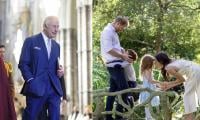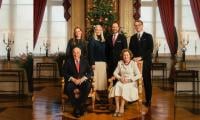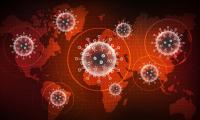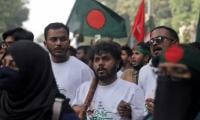Recently, NASA invited Pakistan’s 13-year-old Bisma to the US for her invention of anti-sleep glasses for drivers. Moreover, in June 2023, Pakistani athletes returned home from Berlin with 80 medals. They represented Pakistan in the Special Olympic World Games. Similarly, the Baloch musicians mesmerised the international art festival audience held in Europe this summer. Earlier, after COVID-19, the Dubai Expo Pakistan Pavilion achieved a milestone by hosting more than one million visitors. Hence, almost every month there comes a news regarding Pakistan which reflects Pakistan’s soft image but it remains unnoticed in the mainstream media. Additionally, there are several achievements of Pakistan that ought to be recognised globally. Regrettably, Pakistan neither utilised its untapped soft power potential nor did the concerned institutions and authorities incorporate soft power as a strategic tool to present the soft image of Pakistan across the globe. The majority of Pakistanis are not familiar with the name of Dr Mehboob-ul-Haq; the economist and political theorist, who gave the world the Human Development Index (HDI), a global standard which measures average achievement in key dimensions of human development.
The idea of soft power was coined by Joseph Nye, a professor of international relations at Harvard University, in his book “Bound to Lead: The Changing Nature of American Power”. In his book, Joseph Nye argues that soft power refers to creating influence through non-military and non-coercive means as he says, “getting others to want the outcomes that you want”. By emphasising the idea of soft power he refers to the American democratic ideals, liberal values, respect for human rights, peaceful coexistence etc. Thus, one can say that another way of pursuing national interest is soft power. However, on the other hand; hard power tools like coercion, threats, use of force, sanctions, containment, regime change, etc. are also used by powerful and developed countries. However, in the 21st century, the ‘Soft Power’ holds more significance than hard power, even the emerging superpowers like China and the European Union are relying upon soft power. Building soft power assets is a critical endeavour for Pakistan’s national interests. Pakistan’s diplomatic narrative is manipulated and misinterpreted by its adversaries across the globe, to leverage our position in the world, the government ought to boost the tourism sector and showcase Pakistan as a culturally appealing nation with significant potential.
Whenever the Democrats come to power in the US, they focus on building soft power, but the US military engagements across the globe always keep the hard power on board. In the context of the US, a concept known as smart power emerges, combining elements of both hard and soft power in a discerning manner. Recently, US President Joe Biden hosted the ‘Democracy Summit 2023’ and announced $690 million as new funding for democracy. Similarly, the global initiatives of the Obama administration demonstrate the use of smart power such as the restoration of diplomatic ties with Cuba, the culmination of the Joint Comprehensive Plan of Action (JCPOA) commonly known as the ‘Iran Nuclear Deal’ and Nuclear Security Summit. However, airstrikes of coalition forces on ISIS (Independent State of Iraq and Syria) hideouts in Syria and Iraq and counter-terrorism operations in Afghanistan are the reflections of hard power initiatives of the US foreign policy during the Obama era. Apart from this, Fullbright scholarships, USAID programs and people-to-people exchange programs like the International Visitors Leadership Program (IVLP) are the permanent tools of US soft Power.
Today the concept of soft power is not only confined to the West, countries in the East are also making efforts to enhance their international image through soft power. The peaceful rise of China is one of the best iconic examples of soft power; from the establishment of the Asian Infrastructure and Investment Bank (AIIB) to the Belt and Road Initiative (BRI) and from Brazil, Russia, China and South Africa (BRICS) to recently announced regional cooperation for economic partnership (RCEP) which is known as the largest ever trade alliance of the century; all are apt manifestations of Chinese soft power. However, in 2023, under the leadership of President Xi Jinping, China stunned the Western world by mediating the normalisation of ties between Saudia Arabia and Iran and also announced a peace plan for the Ukraine war. In particular, the Chinese soft power is a bigger challenge for the American hegemony than the military strength of China.
From the developing world, the Indian experience of soft power is also notable as India is successfully using all the mediums of information and culture to project its foreign policy narrative across the world. The Indian government tactfully drew a veil over their fifth-generation war offensive under the garb of their soft power. The investigative report of EU Infolab issued in October 2020, revealed a huge Indian network that propagates fake news and data against Pakistan. Moreover, Bollywood movies, Indian reality shows and web series like ‘Special Ops’ are significant imprints of Indian strategy in which they have developed a synergy by aligning their diplomacy, digital media and foreign policy goals.
Today multiple new elements have entered the diplomatic arena like Twitter, Facebook, Instagram, WhatsApp etc.; known as digital diplomacy. Ambassadors use their official Twitter handles for important announcements while other mediums of social media are also utilised by embassies for portraying the soft image of their states. In sum, diplomacy is an integral part of national power in all eras of world politics and the same is true for the future as well. However, military diplomacy also plays an instrumental role in the presentation of a soft image of a state in the world. For instance, in 2022, Pakistan Navy acquired the command of Combined Task Force CTF-151 for the 12th time; the task force is responsible for the maritime security of international waters in the Indian Ocean from pirates. Earlier, in July 2016, Pakistan Air Force’s C-130 Hercules transport aircraft won the Concurs D’ Elegance trophy at the Royal International Air Tattoo show organised by the Royal Air Force at Fairford Airbase held in the UK. These are indeed a significant expression of Pakistan’s military diplomacy. But at the same time, Pakistan needs to develop its presence in the world of digital diplomacy, which demands increased investment in soft power to illustrate Pakistan’s contributions to conserving peace in the region, to the international audience. In sum, in the age of globalisation where social media has emerged as an effective tool of the digital world; Pakistan being part of the world needs to revamp its national strategy by concentrating more on soft power instead of traditional diplomacy to make the world acknowledge its efforts against terrorism, initiatives to maintain world peace and to promote tourism by showing its art and culture in dynamic ways. Hence, Atif Aslam, Babar Azam, Bisma and Major Uqba who became the first instructor from Pakistan at the Royal Military Academy Sandhurst; all of them are ‘Soft Power Icons’ of Pakistan but we have to turn the potential of our youth into the country’s advantage.
- The writer is a Lahore based independent researcher and teaches International Relations; he can be reached at: waqasiqbal083@gmail.coma















